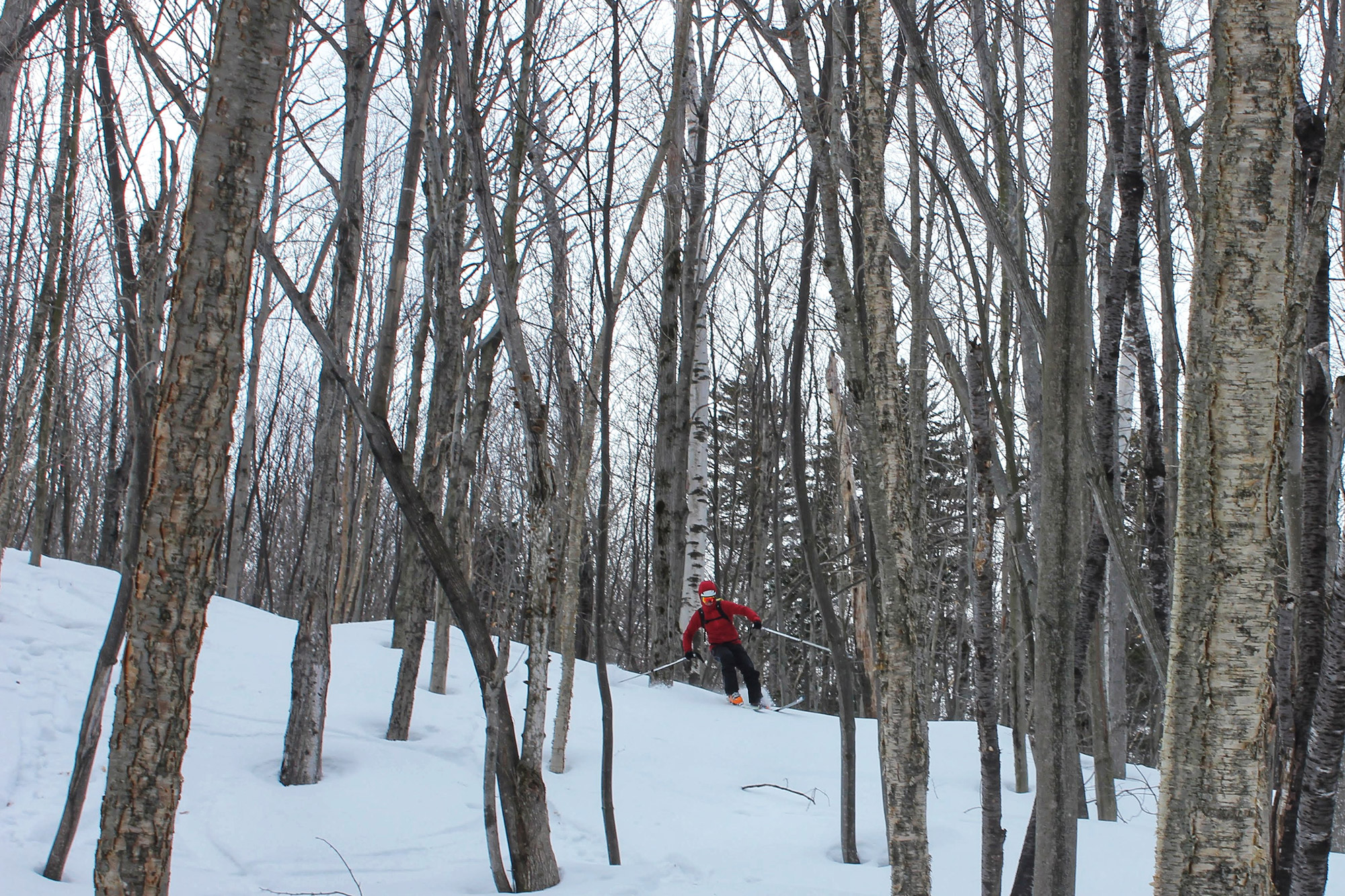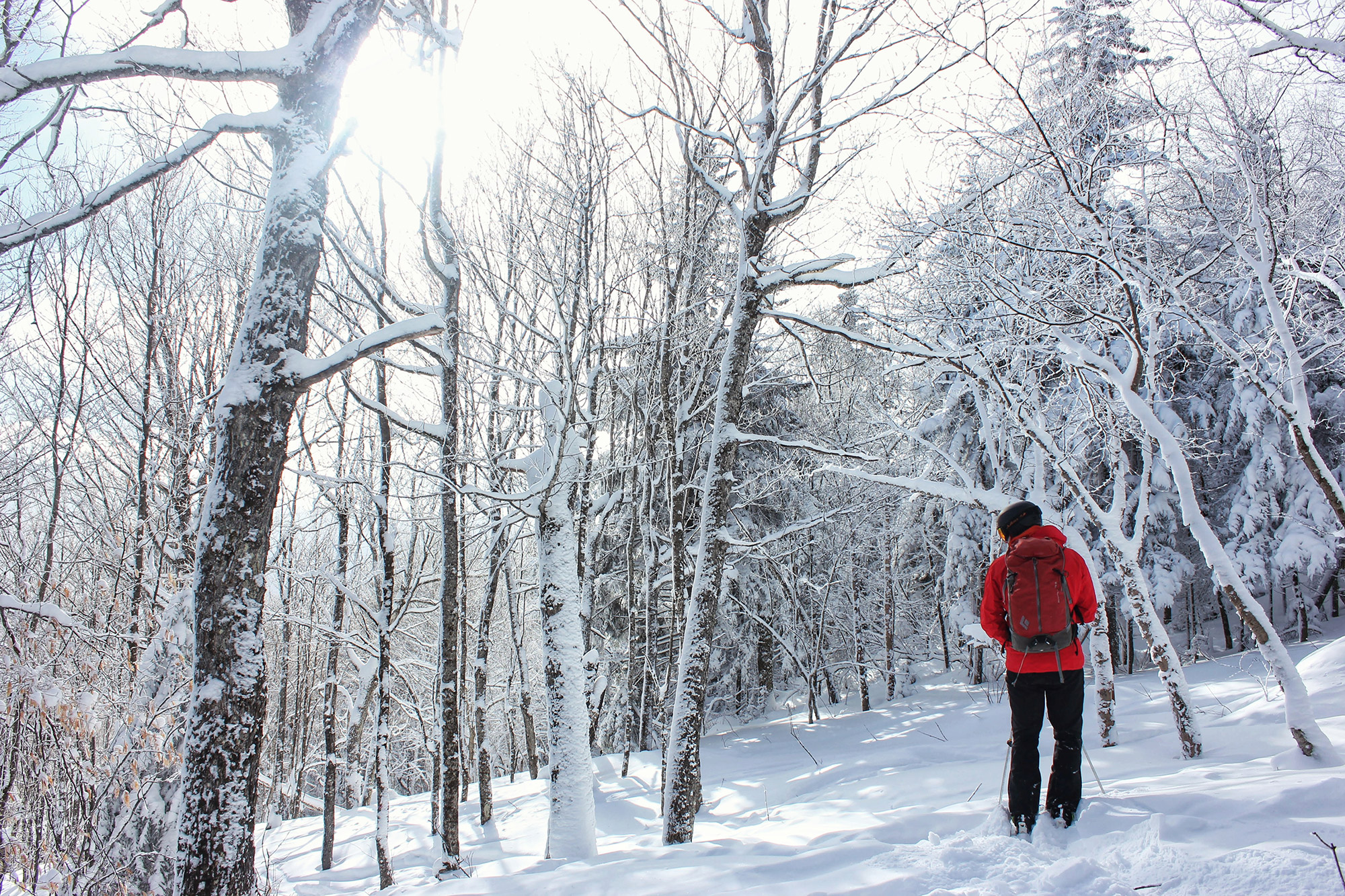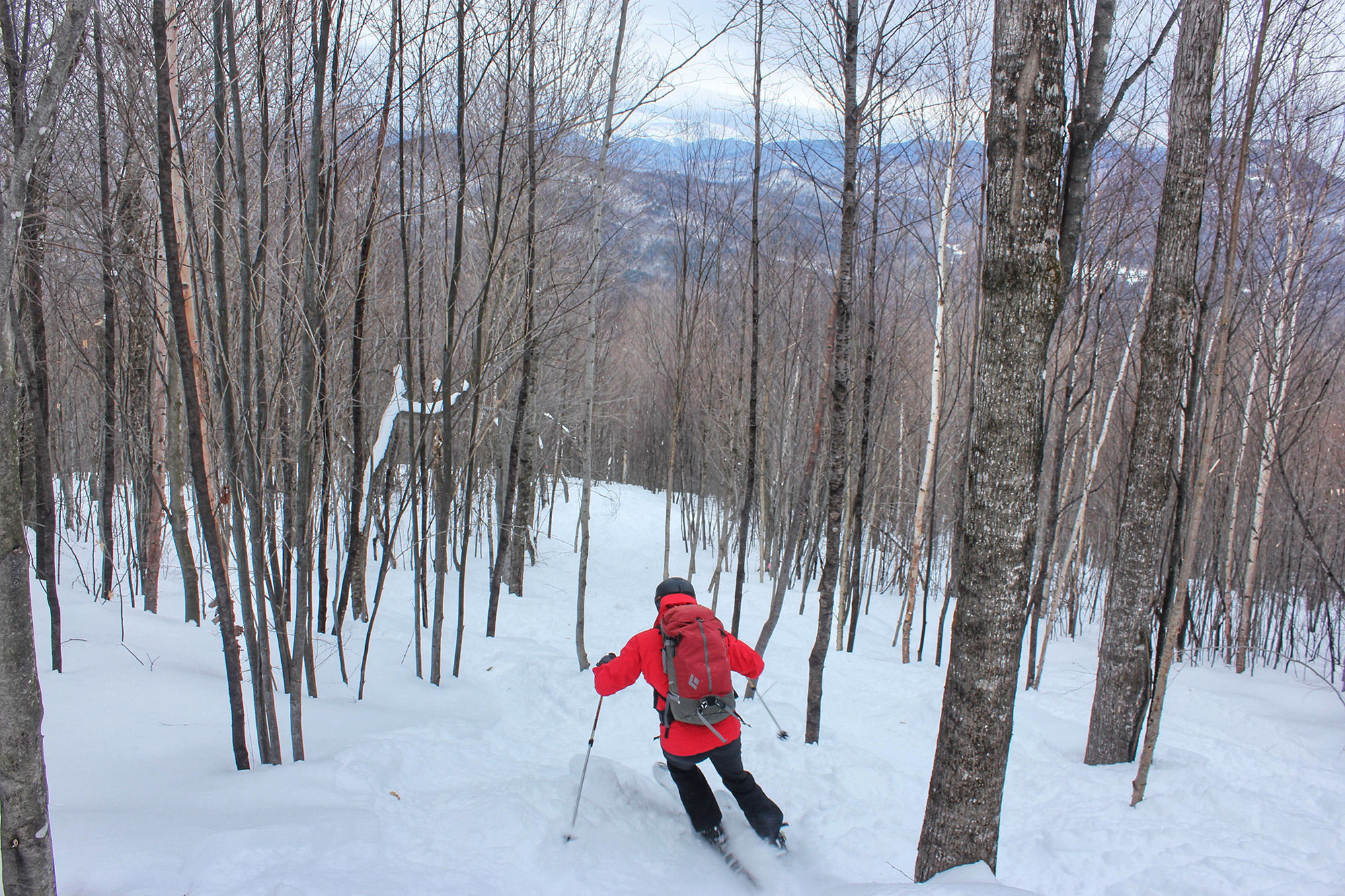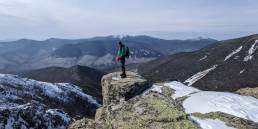If you haven’t skied any of the Granite Backcountry Alliance’s new glades in New Hampshire’s White Mountains yet, you’re missing out. Formed in 2016, the GBA’s mission is to provide low-impact human-powered backcountry skiing opportunities to the public through the creation, improvement, and maintenance of ski glades in New Hampshire and Western Maine. Working in partnerships with public and private landowners, the GBA has so far established five glades, with more on the horizon. Want to sample the GBA’s handiwork? Keep reading for the beta on a few of their most recent projects.

Great Glen North/Bill Hill Glades
Named after a local who “spent some time in them thar hills,” Bill Hill is located on land owned by the Gorham Land Company—who also own the Great Glen Trails, the Mount Washington Auto Road, and the newly opened Glen House Hotel. Categorized by the GBA as a “lunchtime lap” destination, don’t be dissuaded from spending a day sampling the skiing at Bill Hill; The various glades here may be short, but they feature tightly spaced trees in an area that was recently logged and have just the right amount of pitch. On top of that, Bill Hill is north facing so the glades hold snow after a storm.
To access Bill Hill, park in an obvious plowed area on Bellevue Road—just outside of downtown Gorham—and begin skinning on an established snowmobile track to the far end of the airport, which is easily identified by a brick building. Snowmobile traffic here can be heavy at times, especially on the weekends, so keep your guard up, wear bright colors and, if traveling in a group, skin in single file. At the end of the airport, traverse through an open area—that’s also clearly popular with snowmobilers—and loop back along the opposite side of the airstrip for a few hundred yards before entering the woods on the right. If this seems confusing, just picture the approach as a “U.”
Shortly after entering the woods, skiers will come across a mountain bike trail sign reading “For Pete’s Sake.” Follow that trail momentarily before breaking left onto an old logging road that leads to steeper terrain, eventually gaining a ridge and the top of the gladed skiing—if you’re not skiing in the middle of a storm, there is a good chance someone has done the hard work and put in a skin track to follow. From the top of the ridge, there are multiple glades to drop into and enjoy the 600-foot descent through the trees to the old logging road you entered on. From here, either head back up for another run or retrace your steps to the car.

Crescent Ridge Glade
Another great glade is just up the road in the Randolph Community Forest. Offering something for everyone, Crescent Ridge Glade features five distinct ski corridors—described by the GBA as “low-density vertical lines that are approximately 35-50 feet in width”—that all funnel skiers into a large hardwood glade and, eventually, back to the trail they entered on. From here, skiers can easily head up for another lap (or three) before returning the way they came to their car. Offering a wide variety of terrain in a relatively condensed area, the initial pitch of Crescent Ridge’s runs vary between 30 and 35 degrees, before mellowing to 20 to 25 degrees, eventually giving way to 10- and 15-degree terrain on the ski out.
Crescent Ridge skiers start the day at a plowed parking lot located at the end of Randolph Hill Road, right off of U.S. Highway 2 in Randolph. From the parking lot, skin past the kiosk on a wide track for a few minutes before entering the woods on the Carlton Notch Trail. Following the GBA’s blue blazes, skiers will skin through gently rolling terrain, through a large open field with amazing views of the Northern Presidentials (just turn around), and past the bottom of the large hardwood glade. It’s here that the skintrack steepens for the final push to the ridge and entry points to the ski corridors, which are numbered 1 through 5.
Skiers should plan on it taking between an hour and an hour and a half to make the little-under-two-mile, 1,000-foot climb from the parking lot to the ridge and expect it to take 20 to 30 minutes to transition and make the 600-foot climb needed to lap the trees. Getting back to the parking lot is easy and fast (provided the water crossings are filled in)—simply ski back the way you came in.

Maple Villa
Maple Villa Glade is the largest, longest, and most popular glade on this list. Skiing at Maple Villa—which is named for a hotel at the end of the original ski trail—has a long history, beginning in 1933 with the Civilian Conservation Corps cutting the “Maple Villa” ski trail. Shortly thereafter, Maple Villa became the Intervale Ski Area, which operated for approximately the next 40 years. Following the closing of Intervale Ski Area in the mid-1970s, the Maple Villa area was home to the Eastern Mountain Sports (cross-country) Ski Touring Center. Skiers today will discover everything from tightly spaced trees to resort-esque runs varying in length from 800 to 1,700 feet.
One of the factors for Maple Villa’s popularity (in addition to its expansive terrain) is its proximity to North Conway. The parking lot for Maple Villa is found on 70 East Branch Road in Intervale and is just minutes from North Conway. Leaving the parking lot, skiers follow blue blazes along the original Maple Villa Ski Trail as it slowly gains elevation along the two(ish)-mile skin that climbs approximately 1,700 feet. A number of descent options are obvious from the top of the glade—all of which offer a mostly moderate pitch and terrain alternating between closely spaced trees to more widely spaced runs. Keep your eyes peeled as Mount Washington can be spied through the trees on the descent.
The upper half of Maple Villa is meant to be lapped, and the area’s primary runs all deposit skiers to the same place—allowing them to follow the skin track back up roughly 800 feet of elevation, or providing them with a gentle ski out the way they came, along the old Maple Villa Ski Trail. Skiers can expect it to take an hour to an hour and a half to go from the parking lot to the top of the gladed terrain and between 30 and 45 minutes to skin a lap.
Whether it’s establishing larger areas like Maple Villa or maintaining smaller “lunch lap” locations like Bill Hill, the Granite Backcountry Alliance has put a lot of time, work, and money into these projects. If you explore these glades, please be courteous of the area and respectful of the rules, especially where to park if a lot is full. If you’d like to support the GBA, consider donating, becoming a member, attending one of their events (like the upcoming Wild Corn on April 4th), or taking part in one of their workdays.
Tim Peck and Doug Martland
Tim and Doug met long ago at the Eastern Mountain Sports in Canton, Massachusetts. Bonding over a love of slick Quincy Quarry granite, White Mountain sufferfests, and scheming up adventures while folding tee-shirts, today Tim and Doug collaborate to write about their favorite outdoor activities and occasionally get nostalgic about tee-shirt tables.
Related Posts
April 12, 2024
Explore Like a Local: The Outdoor Mecca of North Conway, NH
There's a lot to love about this New…
April 3, 2024
5 Things To Do in the Boston Area During Mud Season
Adventure opportunities are abundant…




